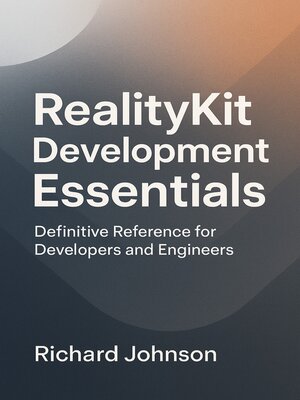RealityKit Development Essentials
ebook ∣ Definitive Reference for Developers and Engineers
By Richard Johnson

Sign up to save your library
With an OverDrive account, you can save your favorite libraries for at-a-glance information about availability. Find out more about OverDrive accounts.
Find this title in Libby, the library reading app by OverDrive.



Search for a digital library with this title
Title found at these libraries:
| Library Name | Distance |
|---|---|
| Loading... |
"RealityKit Development Essentials"
RealityKit Development Essentials is the definitive guide for building advanced augmented reality experiences using Apple's RealityKit framework. Addressing everyone from developers new to AR to experienced engineers seeking mastery, this comprehensive book systematically unpacks the underlying architecture, key concepts, and hands-on techniques required to deliver robust AR applications across Apple platforms. Readers will be guided through the foundational pillars of AR and RealityKit, exploring the entity-component-system model, seamless ARKit integration, maintainable project structures, and critical performance optimizations for real-time, high-fidelity applications.
Delving deeper, the book examines the nuances of scene graph hierarchies, anchoring strategies, custom component design, and state management to build scalable and persistent AR environments. Visual quality is elevated through an authoritative treatment of RealityKit's rendering engine, including photorealistic physically-based rendering, shader customization, advanced lighting, and seamless camera and post-processing integration. Coverage extends to the physical simulation layer, where readers gain practical skills in collision handling, articulated object modeling, and the interplay between physics and animation systems for richly interactive AR worlds.
Beyond core development, RealityKit Development Essentials addresses the end-to-end AR production pipeline—from sophisticated asset management and real-time content updates to multi-user collaboration, networking, and enterprise-grade deployment strategies. The concluding chapters chart the future of AR by exploring machine learning, next-generation sensing technologies like LIDAR, custom graphics pipelines, and ethical frameworks, equipping developers not only to excel in today's AR landscape but to innovate in tomorrow's. This essential resource empowers professionals to architect, build, and refine world-class AR applications at scale.







